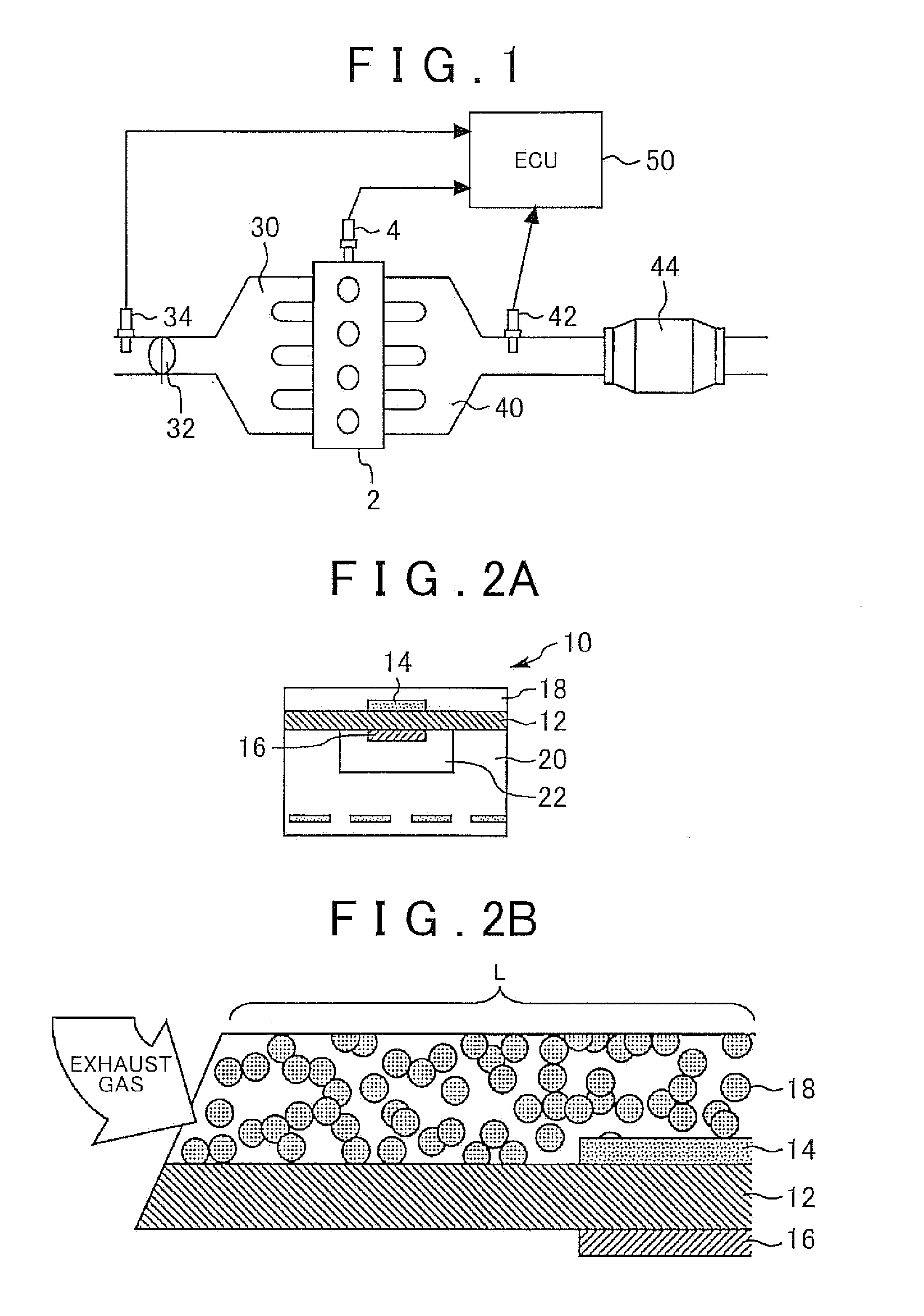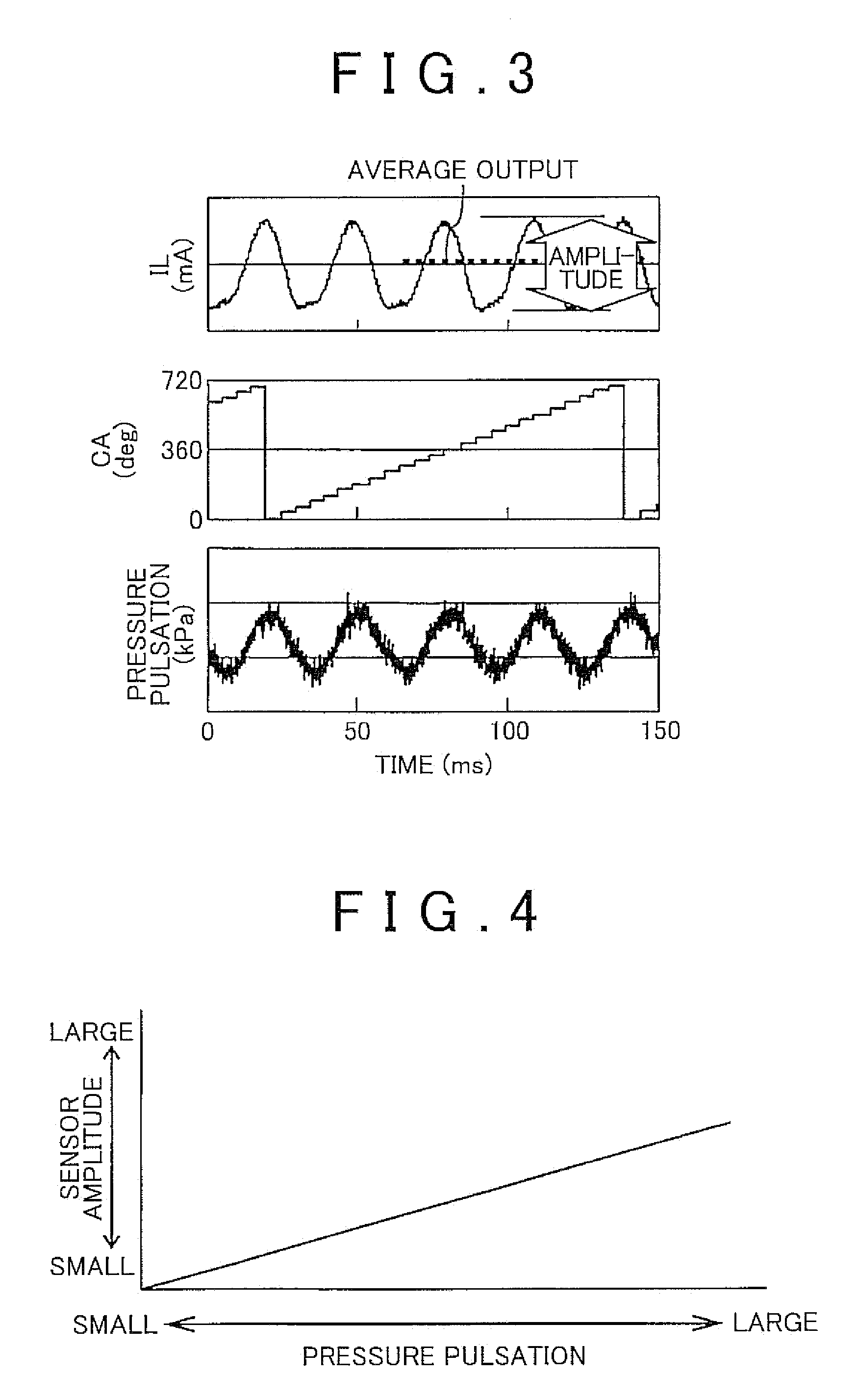Inter-cylinder air-fuel ratio imbalance detection apparatus for internal combustion engine
a technology of air-fuel ratio and detection apparatus, which is applied in the direction of electrical control, process and machine control, instruments, etc., can solve the problems of air-fuel ratio erroneous determination of the imbalance among the cylinders, and achieve the effect of high accuracy
- Summary
- Abstract
- Description
- Claims
- Application Information
AI Technical Summary
Benefits of technology
Problems solved by technology
Method used
Image
Examples
first embodiment
Control of First Embodiment
[0060]In the first embodiment, control that is executed by the control unit 50 includes control for detecting an abnormality in the air-fuel ratio sensor 42 and determining whether there is an abnormal variation in air-fuel ratio among the cylinders (hereinafter, an abnormal variation in air-fuel ratio among the cylinders may be also simply referred to as “imbalance” (or “inter-cylinder air-fuel ratio imbalance”)).
Determination as to Whether There is Imbalance
[0061]An existing system, for example, detects an imbalance on the basis of a step response that is one of indices of the response characteristic of the air-fuel ratio sensor. However, a fluctuation cycle of the air-fuel ratio of exhaust gas within one-cycle operation of the internal combustion engine is generally shorter than a fluctuation cycle of the step response of the air-fuel ratio sensor. Specifically, the fluctuation cycle of the air-fuel ratio of exhaust gas ranges from about 1 ms to 60 ms; ...
second embodiment
[0114]A system and an air-fuel ratio sensor according to a second embodiment respectively have the same configurations as the system and the air-fuel ratio sensor 42 shown in FIG. 1, FIG. 2A and FIG. 2B. In the first embodiment, the description is made on the case where the pulsation coefficient ki is obtained on the basis of the first amplitude, the second amplitude and the amount of variation in the pressure pulsation, the determination value is corrected using the pulsation coefficient ki and then imbalance determination is made on the basis of the imbalance determination parameter that is the corrected determination value.
[0115]In contrast to this, in the second embodiment, description will be made on the case where an amount of variation in sensor output (output variation amount) due to the influence of the pressure pulsation is obtained from an amplitude rate during fuel cut operation (hereinafter, also referred to as “FC”) (hereinafter, an amplitude rate during FC may also be...
third embodiment
[0155]A system and the air-fuel ratio sensor 42 according to the third embodiment respectively have the same configurations as those described in FIG. 1, FIG. 2A and FIG. 2B. The system according to the third embodiment executes the same controls as the controls of the system according to the second embodiment except that, when a set period of time has elapsed from completion of calculation of the correction coefficient, the correction coefficient is cleared and calculated again.
[0156]Specifically, the system according to the third embodiment measures an elapsed time after completion of calculation of the correction coefficient. When the elapsed time exceeds the reference period of time ULTIME, the completion flag exfckfin is set to an off state. When the correction coefficient calculation completion flag exfckfin is set to an off state, calculation of the correction coefficient is resumed by the correction coefficient calculation control routine shown in FIG. 18 and FIG. 19, and th...
PUM
 Login to View More
Login to View More Abstract
Description
Claims
Application Information
 Login to View More
Login to View More - R&D
- Intellectual Property
- Life Sciences
- Materials
- Tech Scout
- Unparalleled Data Quality
- Higher Quality Content
- 60% Fewer Hallucinations
Browse by: Latest US Patents, China's latest patents, Technical Efficacy Thesaurus, Application Domain, Technology Topic, Popular Technical Reports.
© 2025 PatSnap. All rights reserved.Legal|Privacy policy|Modern Slavery Act Transparency Statement|Sitemap|About US| Contact US: help@patsnap.com



